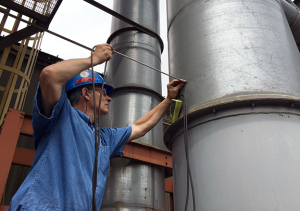Schust™ provides customers with the most comprehensive preventative maintenance and inspection services to keep air pollution control (APC) systems running as intended. Customers trust Schust because, with over 30 years of experience, they know services are performed by knowledgeable technicians.
With our extensive technical and application experience, Schust provides turnkey services you can’t find anywhere else. Your APC system is thoroughly inspected, and if any repairs are needed, Schust can also supply the parts and installation per the final written report. Preventative maintenance and inspection services can be scheduled to fit your time frame.
